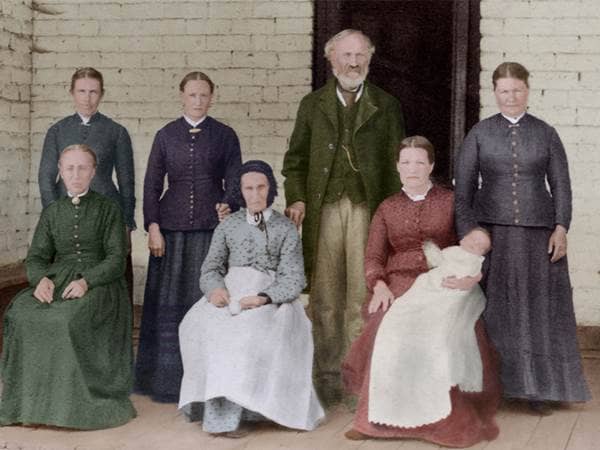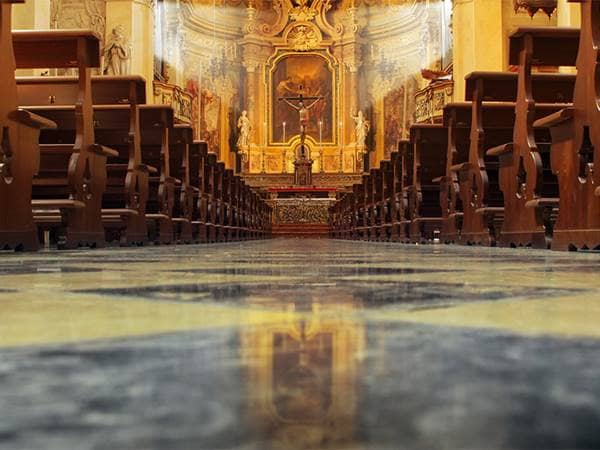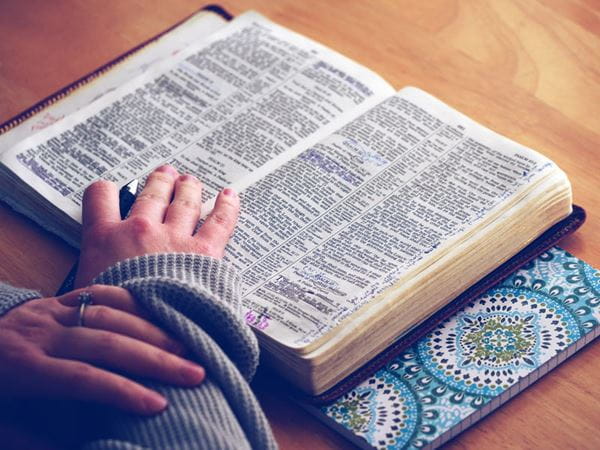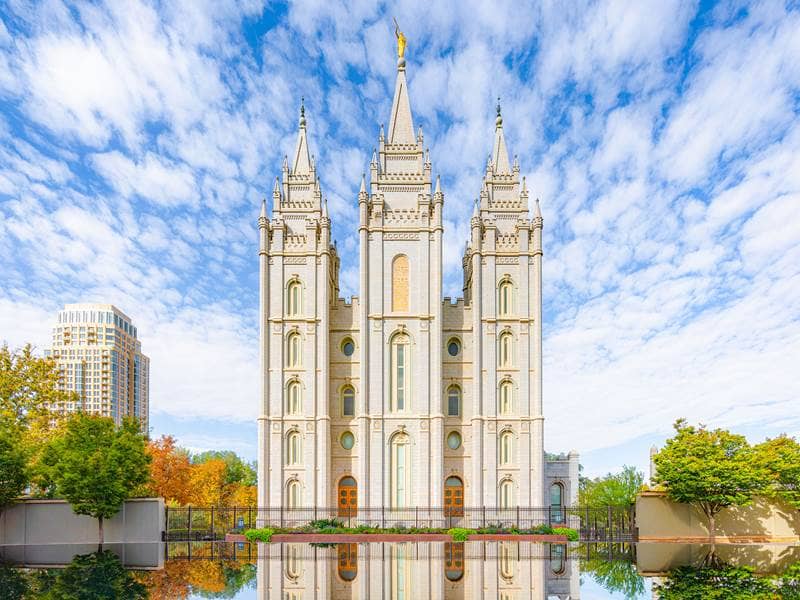
- Trending:
- Pope Leo Xiv
- |
- Israel
- |
- Trump
- |
- Social Justice
- |
- Peace
- |
- Love
The 100 Most Holy Places On Earth
Temple Square

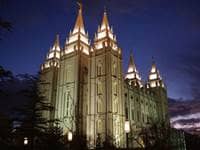
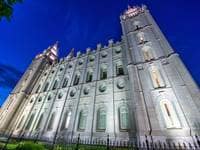
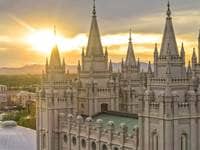
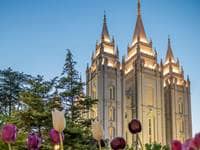
Associated Faiths:
The Church of Jesus Christ of Latter-day Saints (AKA, the “Mormons”)
Accessibility:
Open to visitors.
Annual visitors: 5,000,000
History
While its name is not very descriptive, Temple Square might appropriately be called the “headquarters” of The Church of Jesus Christ of Latter-day Saints (sometimes erroneously referred to as “the Mormons”). In addition to having at its center the famed Salt Lake Temple, the five-block, 10-acre “Square” also encompasses the Church’s twenty-one thousand seat Conference Center and the old Salt Lake “Tabernacle.” Temple Square is home to the well-known “Mormon Tabernacle Choir” (now known as “The Tabernacle Choir at Temple Square”). In addition, on the plot is the Church’s official History Museum, Family History Library, Church History Library, and a number of other buildings of historic significance. Finally, Temple Square also contains the religion’s massive 28-story Church Office Building (which houses many of the organization’s administrative branches) and the Church Administration Building—which is where the offices of the Church’s Prophet, Apostles, and other General Authorities of the Church are located. Thus, the Square serves as the hub of some of the Church’s most important activities.
Shortly after members of the Church of Jesus Christ arrived in the Salt Lake Valley, the then president—Brigham Young—established Temple Square by announcing that the Church would build a “temple to our God” at that location. As the Church’s flagship temple, this iconic building sits at the center of Temple Square—and all other buildings feel as though they flow outward from the “sacred site” of the Temple. Indeed, the streets in the city are labeled according to their distance from the temple (e.g., First South, Second South, and so forth). Thus, by design, the Temple and its focus on Christ are at the center of the city, and also at the heart of the people who built it.
The Square, with its various attractions, is the most popular tourist destination in the state of Utah. About as many people visit Temple Square each year as visit the Grand Canyon. Indeed, Utah’s five National Parks (Arches, Bryce Canyon, Canyonlands, Capital Reef, and Zion’s) combined get about the same number of visitors each year as does Temple Square. And yet, the attractions at the Square are much different than its competitors. The state’s parks are about the outdoors, and Temple Square is decidedly about God. That being said, the Square is famous for its sites and sounds as well. The regular concerts, the weekly “Music and the Spoken Word” broadcast (which is one of the longest-running radio programs in history), and the more than 100,000 Christmas lights in the Square’s gardens each year are some of its more popular attractions.
In the end, the primary reason Brigham Young founded Temple Square was for the erection of the Temple. He believed firmly in sacraments and their related covenants. Young believed that people who sought to keep God’s commandments were entitled to blessings from heaven. And, thus, he commissioned the building of the Square’s Salt Lake Temple as a “House of God” in which believers could serve, enter into sacred covenants, and seek to establish a relationship with their God and their Savior. As a consequence, since its 1847 establishment, the entire city of Salt Lake has encircled and faced the Temple and its Square.
Since the state of Utah is filled with seismic fault lines, in 2019, the Temple and many parts of the Square were closed for seismic retrofitting and revamping. Once completed, it is believed that the most crucial building on Temple Square (the Salt Lake Temple) will be able to withstand a magnitude 7.3 earthquake, thereby making other parts of the Square safer, in the event of an earthquake. Because of the retrofitting and updating of the Salt Lake Temple and its grounds, significant parts of the square are anticipated to be closed until 2025—though portions are still open with limited access.
Religious Significance
When we think of “pilgrimage people,” Muslims, Hindus or Buddhists often come to mind. However, few instantly think of members of The Church of Jesus Christ of Latter-day Saints (sometimes called “Mormons”). And yet, Latter-day Saint Christians have numerous pilgrimage sites, including the Holy Land (where Jesus and the ancient prophets lived and preached), the Sacred Grove (where the Prophet Joseph Smith saw God and Christ in a vision), the Hill Cumorah (where the golden plates inscribed with the Book of Mormon were found), and nearly 300 Latter-day Saint temples throughout the world. Each of these are “sacred sites” for the Saints, and places many make pilgrimage to at various times in their lives. In addition to this list, we might add a site known simply as “Temple Square.”
This rather spacious site in the heart of downtown Salt Lake City, Utah, started out as a singular building—the Salt Lake Temple of The Church of Jesus Christ of Latter-day Saints. And, as the most important building on the site, it is perhaps the one that most sacralizes Temple Square. It is the place that faithful Latter-day Saints go to participate in baptisms, confirmations, various sacraments, and even to be united as a family “for time and for all eternity.” Thus, this site is holy for members of the Church because it is the place where some of the most holy acts upon the earth can and are performed.
Temple Square is not only an attraction for active Latter-day Saint Christians. Over the decades, it is also where non-LDS guests visiting Salt Lake City flock to learn about Utah’s most prominent people, the Latter-day Saints. Sporting two different “visitors’ centers,” numerous museums, a state of the art family history (genealogy) center, and incredible groomed gardens, those not from Utah—but having a little time to “burn”—often find themselves wondering what all of this “Mormon stuff” is about, and so they check out Temple Square, where they can learn about the Church of Jesus Christ, but also about their own family history or genealogy. Indeed, many who visit one of the dozens of religion-related attractions on the 10—acre Square will speak of the peace that prevails there (in addition to the beauty of some of the buildings and the various gardens).
One of the things that set’s Latter-day Saint Christians apart from many other denominations of Christianity today is their firm belief that the heavens remain open, that God continues to speak, that prophets walk the earth today, and that angels communicated on behalf of the Father—just as they did in biblical times. Part of Temple Square is the offices of the Church’s general leadership—consisting of the Prophet (and president of the Church), his counselors, and the Quorum of the Twelve Apostles. Their presence at the Square, their revelatory spirit, their very public testimony that Jesus is the Savior of all, and their revelatory gifts, sanctify this otherwise rather ordinary place. For Latter-day Saint Christians, the fact that God has living prophets and apostles on the earth today is itself a testament that “holy” things are happening on the earth today. For those who are not members of The Church of Jesus Christ of Latter-day Saints, this seems like a curious claim that some reject, others inquire about, and some are converted by. But, in the end, everything that happens at Temple Square is designed to further the work of God, to build His kingdom upon the earth, and to help the masses—whether they be Latter-day Saints or not—to come unto Christ and be perfected in Him.


